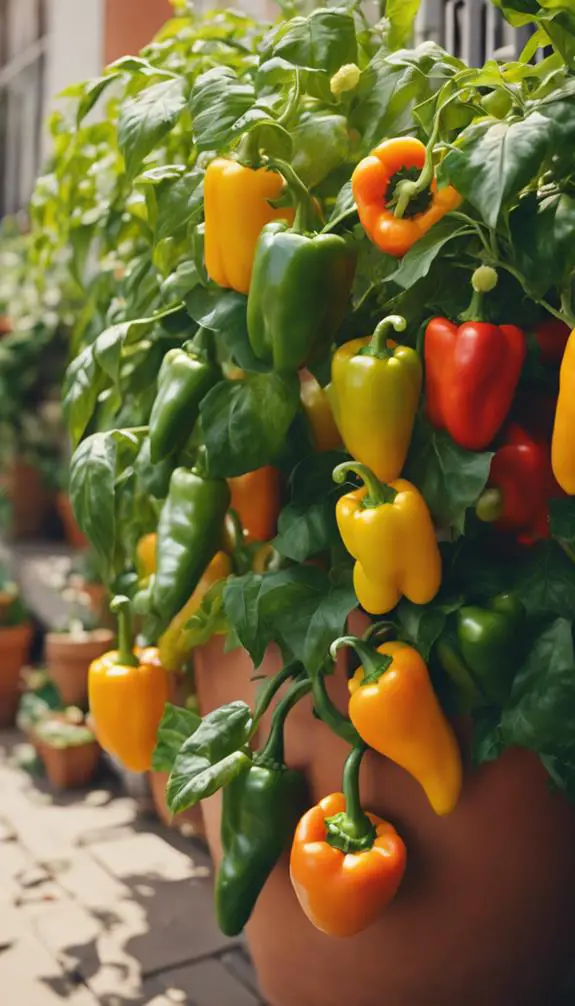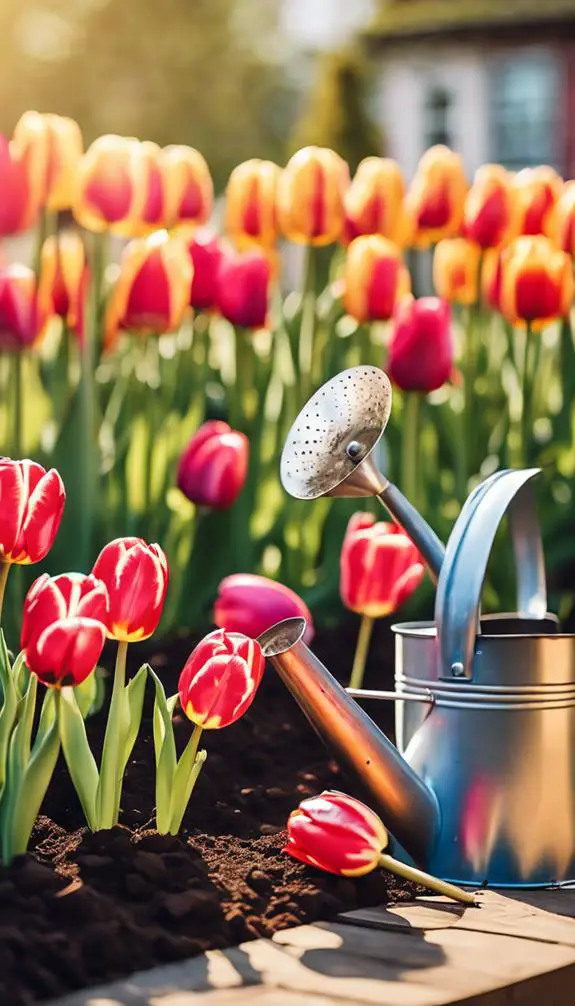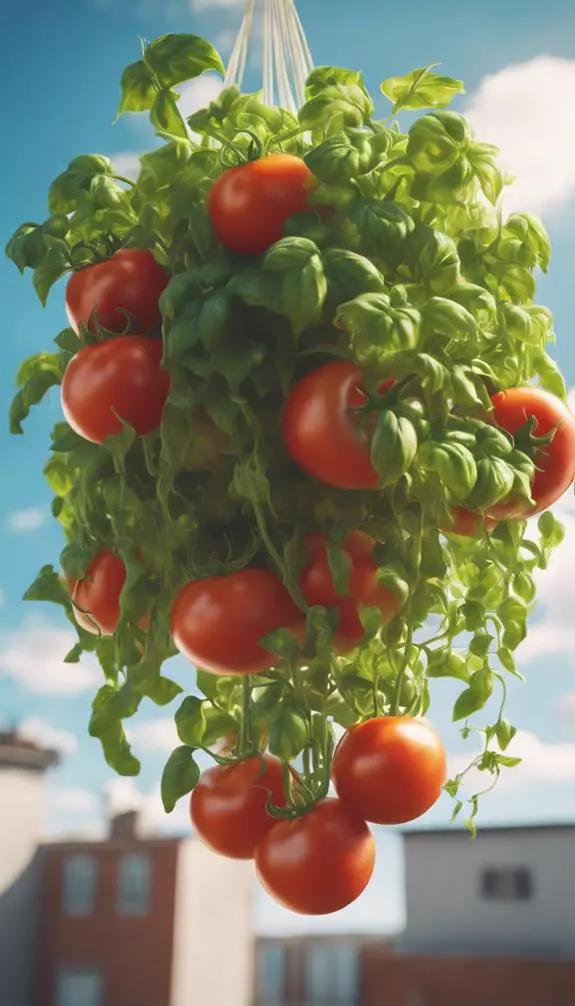When planning your fall vegetable garden, timing is essential. You might wonder about the best time to start planting your crops to guarantee a successful harvest.
Understanding the ideal planting window can make all the difference in the outcome of your garden.
By considering various factors and strategically scheduling your plantings, you can set yourself up for a rewarding experience.
But how do you determine the perfect timing for your fall vegetable garden?
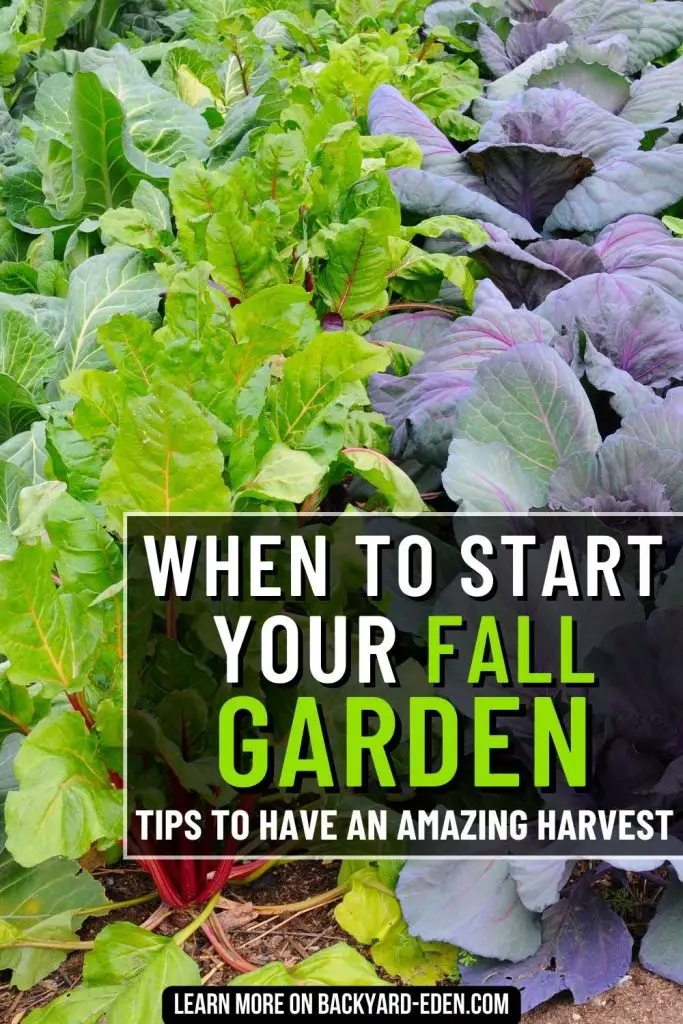
Key Takeaways
- Consider the average first frost date in your area.
- Plant cool-season vegetables 6-8 weeks before first frost.
- Consult a planting calendar for specific vegetable planting dates.
- Choose frost-resistant vegetables for fall planting.
- Monitor weather forecasts for temperature variations.
Factors Influencing Planting Schedule
To determine the best timing for planting your fall vegetable garden, consider the key factors that influence the planting schedule. Proper soil preparation is essential for a successful fall garden. Make sure your soil is well-draining, loose, and rich in organic matter.
Before planting, check the planting depth requirements for each vegetable variety as they can vary. Planting too deep or too shallow can impact germination and growth.

Establishing a consistent watering schedule is important during the fall season. Vegetables need a steady water supply to develop properly. Monitor the moisture levels in the soil regularly and adjust your watering frequency accordingly.
Additionally, implementing proper pest control measures is crucial to protect your crops. Keep an eye out for common garden pests like aphids, caterpillars, and beetles. Consider using natural pest deterrents or insecticidal soaps to safeguard your plants.
Understanding First Frost Dates
Understanding first frost dates is essential for a successful fall vegetable garden. By knowing the average date of the first frost in your area, you can plan your planting schedule accordingly.
This guarantees that your plants have enough time to mature before the cold weather sets in, ultimately impacting your harvest yield.
Frost Date Importance
Knowing the first frost date for your region is essential when planning your fall vegetable garden. Anticipating the frost date allows you to adjust your planting schedule effectively.
By checking weather forecasts, you can determine the ideal time to start planting your fall crops. This information provides flexibility within your planting window, ensuring your vegetables have enough time to mature before the first frost hits.
Understanding your region’s average first frost date helps you select vegetable varieties that can thrive within the available time frame. Some vegetables, like kale and Brussels sprouts, are frost-resistant and can withstand colder temperatures.
In fact, the sprouts themselves have a sweeter flavor after a mild frost.

However, others, such as tomatoes and peppers, are more sensitive to frost and need to be harvested before the first frost arrives.
Planting Season Duration
By being aware of your region’s first frost date, you can effectively plan the duration of your fall planting season. Knowing when the first frost is expected allows you to calculate the number of weeks you have for planting before the cold sets in. This information is important for determining the types of vegetables you can grow and when to start planting them.
When planning your fall vegetable garden, consider the planting depth required for each crop. Some vegetables need to be sown at specific depths to guarantee proper growth and development. Be sure to follow the planting instructions for each type of vegetable to maximize your harvest.
Additionally, establish a consistent watering schedule to keep your fall garden healthy. As the weather begins to cool, plants may require less water than during the hot summer months.
However, it’s crucial to monitor soil moisture levels and adjust your watering routine accordingly to support the growth of your fall vegetables.
By understanding these factors and planning accordingly, you can make the most of your fall planting season.
Weather Impact Planning
To effectively plan for the impact of weather on your fall vegetable garden, familiarize yourself with the first frost dates specific to your region. Weather monitoring is essential for a successful planting strategy. Knowing when the first frost is expected allows you to work backward in your planning, ensuring your vegetables have ample time to mature before the cold sets in.
Temperature fluctuations play a significant role in determining your garden’s success. By understanding the average first frost date in your area, you can make informed decisions about when to plant different vegetables.
Some crops, like kale and Brussels sprouts, can withstand frost better than others, such as tomatoes or peppers. This knowledge enables you to adjust your planting schedule accordingly.
Choosing the Right Vegetables
Selecting the right vegetables for your fall garden requires careful consideration of your climate, available space, and personal preferences. When choosing your vegetables, think about companion planting strategies to maximize space and deter pests naturally. For instance, planting marigolds alongside tomatoes can help repel harmful insects.

Additionally, consider the harvesting tips for each vegetable to make sure you pick them at their peak ripeness for the best flavor and nutrition.
Before planting, make sure your soil is well-prepared by adding compost or organic matter to provide essential nutrients for your crops. Proper soil preparation is key to a successful fall garden. When it comes to pest management, consider using natural methods like neem oil or introducing beneficial insects to combat unwanted pests without harmful chemicals.
Planning Your Garden Layout
When planning your fall vegetable garden layout, consider the placement of your garden beds to maximize sunlight exposure and accessibility for watering.
Implement a crop rotation strategy to maintain soil health and prevent disease.
Guarantee proper spacing between plants to allow for best growth and reduce competition for resources.
Garden Bed Placement
Consider the layout of your garden beds carefully to optimize sunlight exposure and efficient use of space. Raised beds are a great option for fall vegetable gardens as they provide good drainage and can be filled with high-quality soil.
If you have limited space, container gardening is a fantastic alternative, allowing you to grow a variety of vegetables in pots or boxes on a patio or balcony. When planning your garden layout, think about incorporating vertical gardening techniques such as trellises or stakes to maximize space and grow vine vegetables like cucumbers or beans upwards.
Additionally, consider companion planting to enhance the growth of your fall vegetables. Pairing plants that benefit each other, such as planting basil near tomatoes to improve flavor and repel pests, can help your garden thrive./im
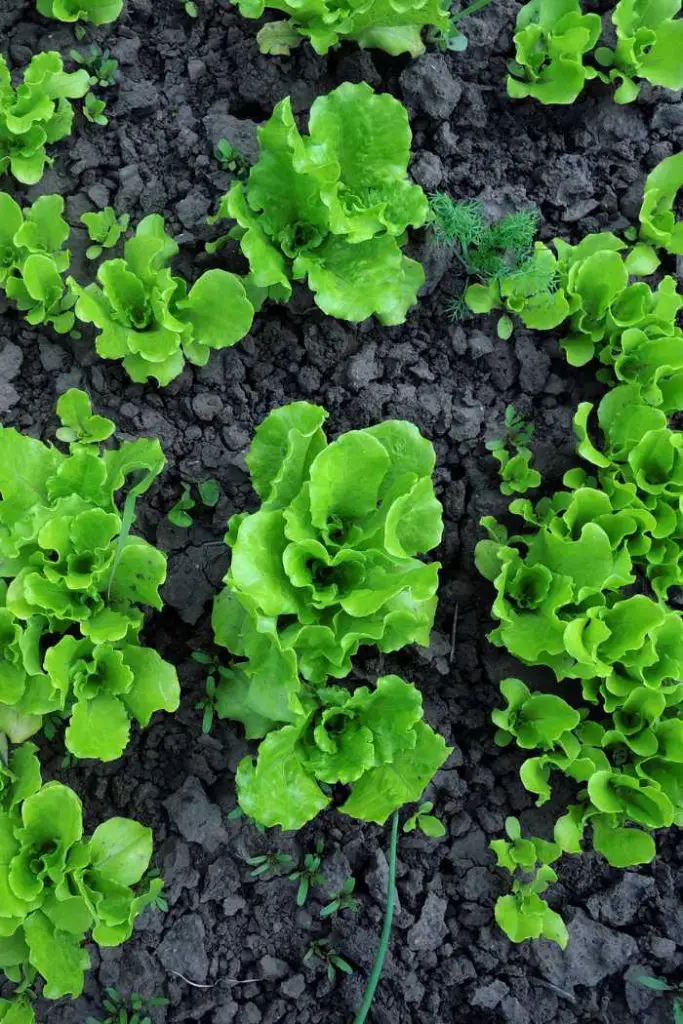
Crop Rotation Strategy
To optimize the health and yield of your fall vegetable garden, strategically planning your garden layout with a crop rotation strategy is essential. Crop rotation offers numerous benefits such as reducing soil-borne diseases, improving soil structure, and enhancing nutrient availability.
The timing of crop rotation is vital – make sure you rotate crops annually to prevent the buildup of pests and diseases specific to certain plant families.
When implementing your crop rotation strategy, consider planting depth as a key factor. Varying the depth at which different vegetables are planted can help maximize space and promote healthier root development.
Shallow-rooted crops like lettuce and radishes can be planted together, while deep-rooted plants such as carrots and tomatoes should be placed in another section to avoid competition for nutrients.
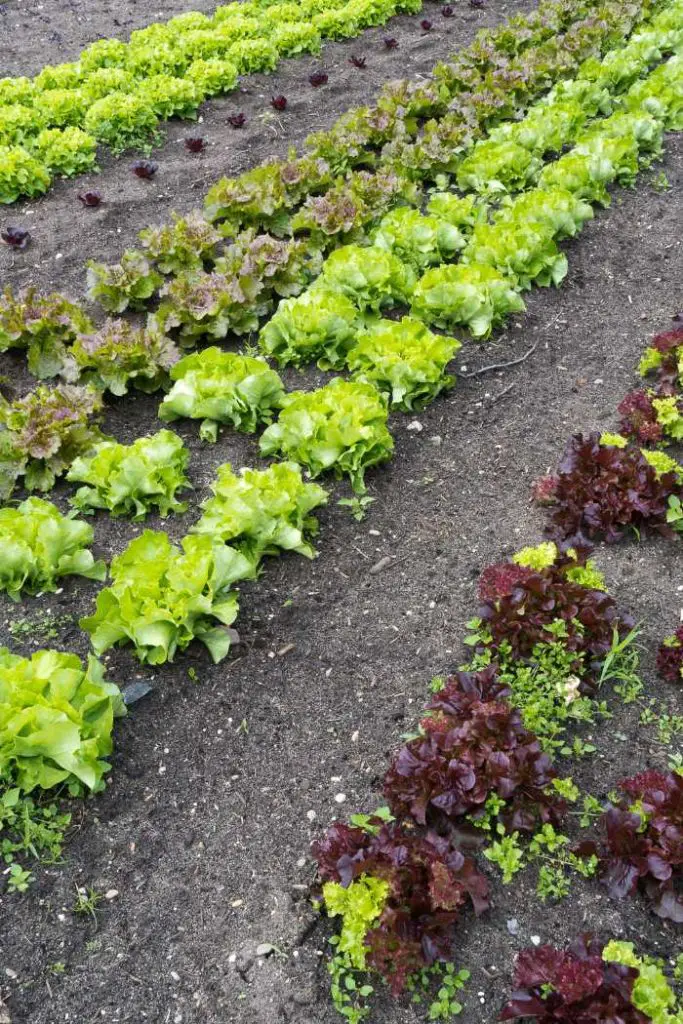
Spacing for Plants
For best growth and efficient use of space in your fall vegetable garden, it’s important to plan the spacing for your plants carefully. Proper plant spacing is vital for allowing each plant to receive adequate sunlight, water, and nutrients for ideal development. When deciding on plant spacing, consider the mature size of the plants to avoid overcrowding. Companion planting, where compatible plants are grown near each other to benefit one another, can also play a role in spacing decisions.
Before planting, make sure your soil is well-prepared with organic matter and nutrients to support healthy plant growth. Adequate soil preparation can help improve drainage and aeration, setting the foundation for a successful garden. Implementing mulching techniques around your plants can further assist in retaining soil moisture, regulating soil temperature, and suppressing weed growth. Mulching also adds essential organic matter back into the soil as it breaks down over time, promoting overall soil health and fertility.
Sowing Seeds Indoors
To start seeds indoors successfully, you’ll need the right materials and proper techniques. Begin by selecting a well-lit area with consistent warmth for indoor germination. Use seed trays or small containers filled with a high-quality seed-starting mix, ensuring good moisture retention. Plant the seeds at the recommended depth and spacing for best growth.
Maintain a humid environment by covering the containers with plastic wrap or using a seedling heat mat to promote germination. Once the seedlings emerge, provide adequate light to prevent them from becoming leggy. Consider using a grow light if natural light is insufficient. Keep the soil consistently moist but not waterlogged to avoid damping off.
As the seedlings grow, ensure proper seedling care by rotating them regularly to promote even growth and prevent reaching for light. When the seedlings have developed a couple of sets of true leaves, they’re ready for transplanting outdoors. Harden off the seedlings gradually before planting them in the garden to help them acclimate to outdoor conditions.
Direct Seeding in the Garden
After successfully nurturing your seedlings indoors, the next step in your fall vegetable garden journey is direct seeding in the garden. Before planting, make sure the soil is well-prepared by loosening it to a depth of 6-8 inches and incorporating compost for added nutrients. Water the soil thoroughly a day before planting to guarantee it’s moist but not waterlogged.
When direct seeding, consider pest management strategies to protect your seeds from hungry critters. You can use physical barriers like row covers or organic solutions such as neem oil. Companion planting is also beneficial; for example, planting marigolds alongside your vegetables can deter pests naturally.
Be sure to follow the recommended spacing and planting depth for each vegetable variety. Keep the soil consistently moist after planting to aid germination. As your seeds sprout and grow, monitor for any signs of pests or diseases, and take prompt action to protect your garden. With proper soil preparation, watering, pest management, and companion planting, your fall vegetable garden will flourish.
Transplanting Seedlings
When transplanting seedlings into your garden, make sure the root ball is well-watered to aid in the establishment of healthy plants. Before transplanting, it’s important to harden off seedlings gradually by exposing them to outdoor conditions for increasing periods. This process toughens them up, preparing them for life in the garden.
When choosing where to plant your seedlings, remember to take into account proper spacing. Giving each plant enough room ensures they’ve access to adequate sunlight, nutrients, and water, promoting excellent growth. Crowding can lead to competition for resources and increased susceptibility to diseases.
When transplanting, dig a hole slightly larger than the root ball to accommodate the roots without bending or crowding them. Gently place the seedling in the hole, making sure it sits at the same depth as it did in the container. Pat the soil around the plant firmly to eliminate air pockets and provide stability.
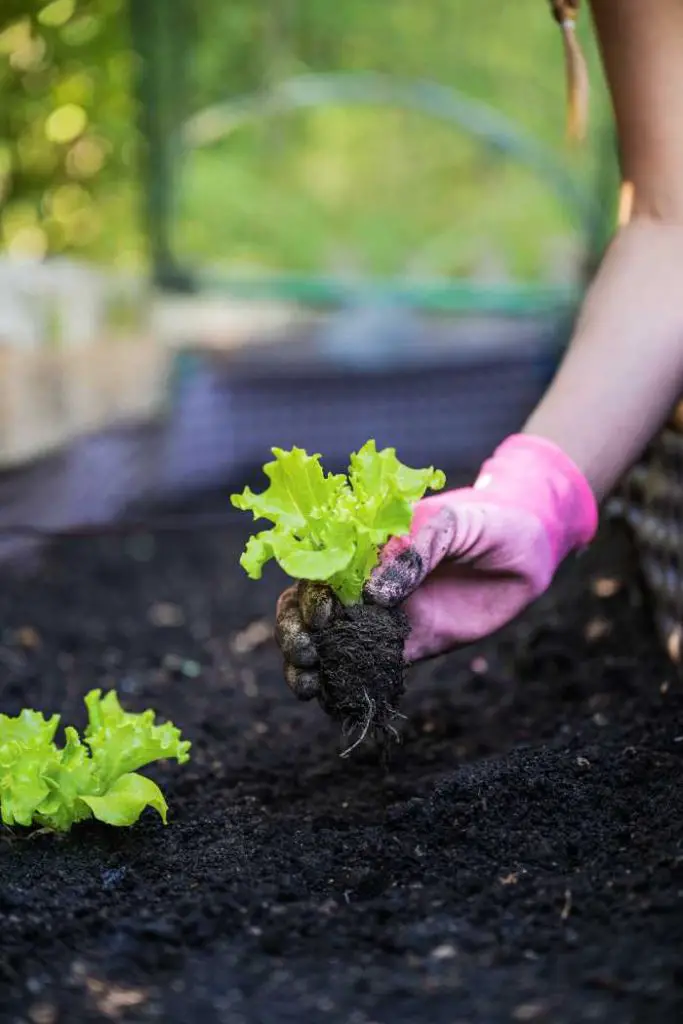
Properly transplanting your seedlings with attention to hardening off and spacing will set the stage for a successful fall vegetable garden.
Extending the Harvest Season
To extend your harvest season, start by planning your fall vegetable garden strategically. Choose late-blooming varieties of vegetables that thrive in cooler temperatures.
Utilize season extension methods like row covers or cold frames to protect your crops from frost and prolong your harvest well into the fall months.
Prolonging Harvest With Planning
By strategically planning your fall vegetable garden, you can extend the harvest season to a great extent. Harvest preservation and storage are essential aspects to take into account when prolonging the harvest. Make sure you have the right tools for harvesting, such as sharp pruners and baskets, to prevent damage to your crops. To store your harvest, familiarize yourself with different preservation methods like canning, freezing, or drying, depending on the vegetables you grow.
Crop rotation is another key strategy. By rotating your crops each season, you can prevent soil depletion and reduce the risk of pests and diseases. This practice helps maintain soil fertility and overall plant health, ultimately leading to a longer harvest period.
Additionally, companion planting can maximize your garden space and yield. Pairing compatible plants together can improve soil quality, deter pests, and enhance pollination, all of which contribute to a bountiful and prolonged harvest. With proper planning and these techniques in place, you can enjoy fresh produce well into the fall season.
Choosing Late-Blooming Varieties
Extend your fall vegetable garden’s harvest season by selecting late-blooming varieties that can thrive in cooler weather conditions. When it comes to variety selection, opt for vegetables like kale, Brussels sprouts, and carrots, which are known for their ability to withstand colder temperatures and continue growing into the fall months.
These late bloomers not only prolong the growing season but also provide you with a bountiful harvest well into autumn.

Consider planting these varieties at the appropriate time to guarantee a successful late-season garden. Start seeds indoors or directly sow them in late summer to early fall, depending on the specific requirements of each plant. By planning your planting schedule carefully, you can maximize the potential of these late-blooming vegetables.
Utilizing Season Extension Methods
Enhance your fall vegetable garden’s productivity by implementing effective season extension methods that prolong the harvest season. Seasonal gardening can be extended by utilizing various techniques to manage temperatures and protect your plants from frost. One method is using row covers, which act as a physical barrier against cold temperatures while still allowing sunlight, air, and moisture to reach your plants. These covers can be made of lightweight fabric or plastic and are easy to install.
Another effective way to extend the harvest season is by utilizing cold frames or hoop houses. These structures create a microclimate that shields your plants from harsh weather conditions, allowing you to grow vegetables well into the fall and even winter months. Additionally, mulching around your plants can help regulate soil temperature and retain moisture, providing a more stable environment for your crops.
Protecting Plants From Frost
To shield your plants from frost, consider using protective coverings such as row covers or cloches. Frost protection strategies are essential in ensuring your fall vegetables thrive despite the cold weather.
Row covers are lightweight, breathable fabrics that can be draped over plants to provide insulation and protection from frost. They allow sunlight, air, and water to reach the plants while trapping heat to keep them warm.
Cloches, on the other hand, are like mini greenhouses that can be placed over individual plants to shield them from cold temperatures. They work by creating a small, warm microclimate around the plant, helping it survive the frosty nights.
When implementing cold weather precautions, make sure to secure the covers tightly to the ground to prevent cold air from seeping in. Monitor the weather forecast regularly to anticipate any extreme drops in temperature and adjust your protection accordingly. Remember to remove the covers during sunny days to prevent the plants from overheating.
Harvesting Fall Vegetables
When safeguarding your fall vegetable garden from frost with protective coverings, you also need to know the best timing for harvesting your crops to guarantee peak flavor and freshness. Harvesting your fall vegetables at the right time guarantees that you get the most out of your hard work in the garden. To preserve the harvest, it’s essential to pick your vegetables when they’re at their ripest.
For example, root vegetables like carrots and beets should be harvested once they’ve reached a good size and color. Leafy greens are best picked when they’re young and tender.
After harvesting, storing vegetables properly is key to maintaining their quality. Root vegetables such as potatoes and onions should be stored in a cool, dark place to prevent sprouting and decay. Leafy greens like lettuce and spinach can be stored in the refrigerator to retain their crispness.
Succession Planting Techniques
Consider staggering your planting schedule to guarantee a continuous harvest throughout the fall season. Succession planting benefits your garden by ensuring a steady supply of fresh vegetables. This technique involves planting new crops as soon as old ones are harvested. By timing your plantings strategically, you can extend your harvest well into the fall months.
Crop rotation techniques offer additional benefits when practicing succession planting. Rotating crops helps prevent the build-up of pests and diseases in the soil, promoting healthier plants and higher yields. When planning your fall garden, consider rotating your crops to maintain soil fertility and structure.
To implement succession planting effectively, start by mapping out your garden space and creating a planting schedule. Group vegetables with similar growing requirements together to maximize space and resources. Be mindful of the maturation times for different crops and plan your successions accordingly. With proper timing and crop rotation techniques, you can enjoy a bountiful harvest from your fall vegetable garden.
Tips for Cold-Hardy Crops
For successful cultivation of cold-hardy crops in your fall vegetable garden, prioritize selecting varieties known for their ability to withstand cooler temperatures and frost. When choosing cold-hardy crops, look for options like kale, spinach, carrots, radishes, and Brussels sprouts, which thrive in chilly conditions. These crops can even taste sweeter after a light frost.
To maximize your cold-hardy crops’ growth, consider planting strategies that take advantage of the remaining warmth in the soil. Start by planting seeds slightly deeper than usual to shield them from the cooler air above. Additionally, using row covers or cloches can provide extra protection during frosty nights.
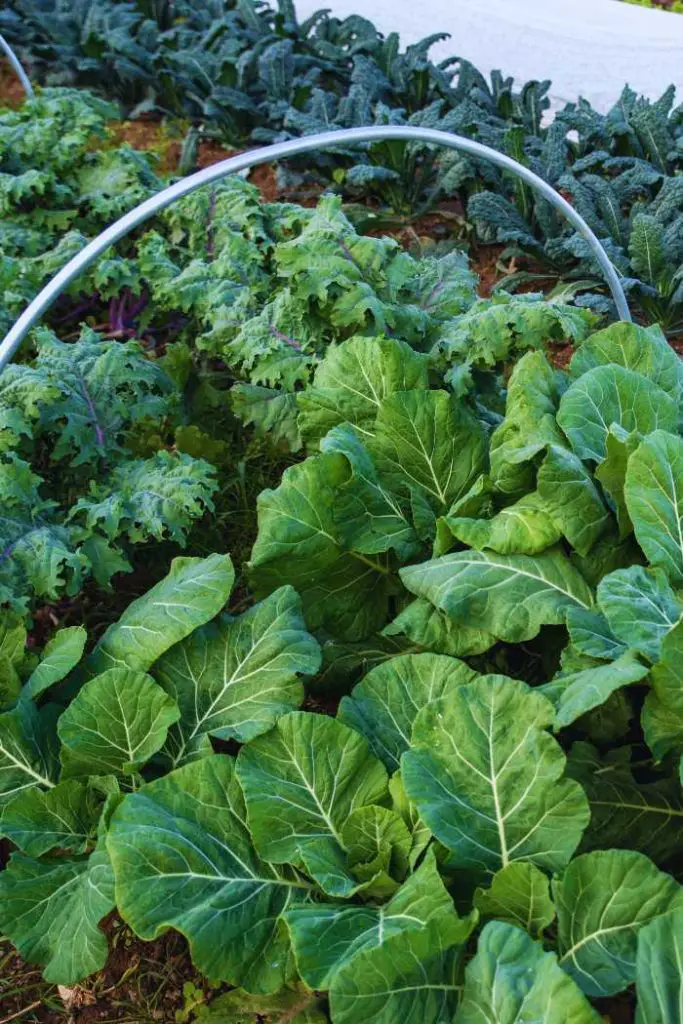
Watering your cold-hardy crops earlier in the day allows the soil to absorb moisture before temperatures drop at night, helping to prevent damage from freezing. Mulching around the plants can also aid in retaining soil warmth and moisture. By implementing these planting strategies, you can guarantee a bountiful harvest of delicious cold-hardy vegetables from your fall garden.
Winterizing Your Fall Garden
Prepare your fall garden for the winter months ahead by implementing key strategies to protect your plants from the cold. Mulching benefits your garden by insulating the soil, retaining moisture, and providing a barrier against extreme temperatures. Before the significant winter sets in, make sure your garden is well-mulched to safeguard the root systems of your plants.
Soil preparation is vital for winterizing your fall garden. By amending the soil with compost or organic matter, you can enhance its structure and fertility, promoting robust root development. Healthy roots are better equipped to withstand the challenges of winter and secure the survival of your plants until spring.
To provide adequate winter protection, consider using row covers, cold frames, or cloches to shield your plants from frost and chilling winds. Additionally, watering your garden before a deep freeze can help insulate the roots and prevent dehydration during the colder months. By taking these steps to winterize your fall garden, you can protect your plants and set the stage for a successful growing season ahead.
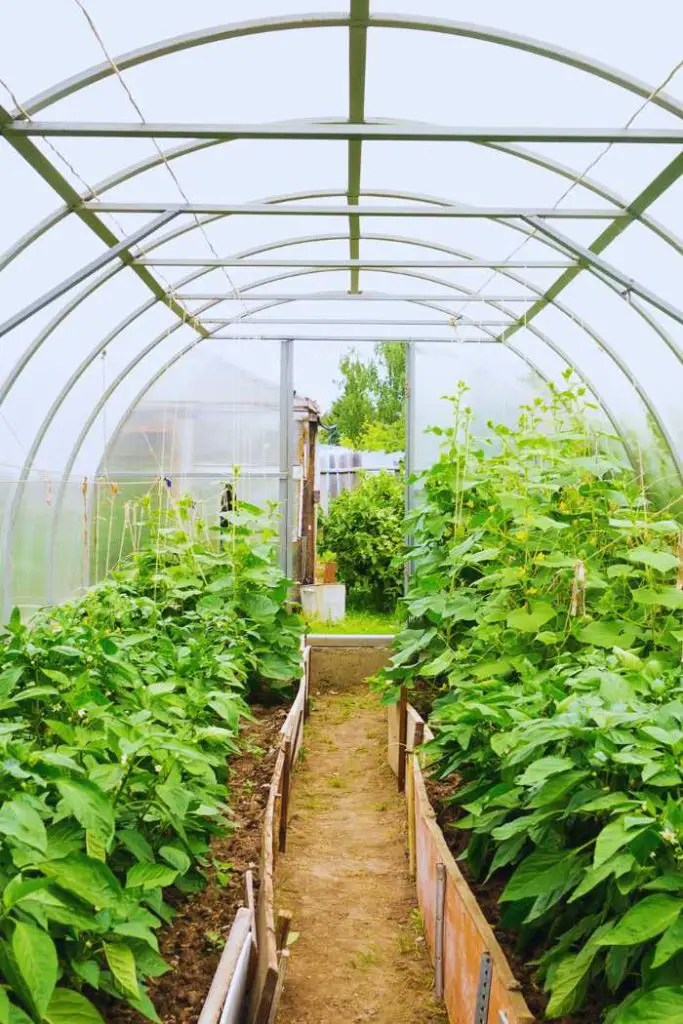
Frequently Asked Questions
Can I Plant Fall Vegetables in Containers Instead of a Traditional Garden?
You can definitely plant fall vegetables in containers instead of a traditional garden. Container gardening is a great space-saving technique. Choose large enough pots, provide proper drainage, use quality soil, and make sure your plants receive adequate sunlight.
What Are Some Common Pests and Diseases to Watch Out for in a Fall Vegetable Garden?
To manage pests effectively in your fall vegetable garden, try crop rotation. Prevent diseases by practicing companion planting. By incorporating these strategies, you can create a healthier garden environment for your plants to thrive.
How Can I Amend My Soil to Ensure Optimal Growth for Fall Vegetables?
To guarantee optimal growth for fall vegetables, amend your soil by balancing nutrients. Consider space-saving options like fall container gardening. It’s crucial for healthy plants. Amend your soil to give them the best chance to thrive.
Are There Any Vegetables That Should Not Be Planted in a Fall Garden?
Avoid planting warm-season crops like tomatoes and peppers in a fall garden. Choose cool-season varieties such as lettuce, broccoli, and carrots. Research the planting schedule, best varieties, companion planting, and spacing requirements for a successful harvest.
What Are Some Creative Ways to Preserve and Store Fall Vegetables for Winter?
To preserve fall vegetables for winter, consider drying herbs, pickling cucumbers, making tomato sauce, and freezing greens. Try creative recipes like fermented veggies or canned jams. These techniques guarantee a bountiful and flavorful winter storage.
Conclusion
Now that you have a solid understanding of the factors influencing your fall vegetable garden, from first frost dates to plant selection and garden layout, you’re well-equipped to plan and execute a successful harvest.
By utilizing succession planting techniques, choosing cold-hardy crops, and properly winterizing your garden, you can extend your growing season and enjoy fresh, flavorful vegetables well into the fall and even winter months.


